ART NEWS:Nov.03
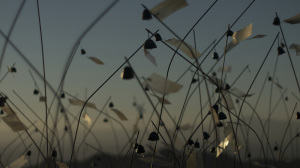 A selection of works by Christian Boltanski’s is on presentation at the exhibition “Animitas-Selected Works”. Evolving around two video installations part of the Espace Louis Vuitton Collection, “Animitas” (2014), and “Animitas (Blanc)” (2017), the exhibition brings together four pieces questioning the passing of time and plunging the viewer into a meditative atmosphere. “Animitas” is one of the artist’s most ambitious recent projects: creating museum-like expressions within expanses of desert. Initially, it is an out-of-doors installation which consists of 800 Japanese bells on slender stalks. The wind bell is a traditional object in Japan, hung from a home’s window frame or doorframe, accompanied by a small piece of paper bearing a haiku. Boltanski presents the films in conjunction with a flower bed and grey, crumpled papers, which evolve with the passage of time and people over the course of the exhibition. Between the two Animitas installations presented here, the words “Départ” and “Arrivée” glow along the visitor’s path, summarising what life is according to Boltanski: a departure, an arrival, separated by the passing time. Info: Espace Louis Vuitton München, Maximilianstraße 2a, 80539 Munich, Duration 9/11/17-31/3/18, Days & Hours: Mon-Fri 12:00-19:00, Sat 10:00-19:00, www.fondationlouisvuitton.fr
A selection of works by Christian Boltanski’s is on presentation at the exhibition “Animitas-Selected Works”. Evolving around two video installations part of the Espace Louis Vuitton Collection, “Animitas” (2014), and “Animitas (Blanc)” (2017), the exhibition brings together four pieces questioning the passing of time and plunging the viewer into a meditative atmosphere. “Animitas” is one of the artist’s most ambitious recent projects: creating museum-like expressions within expanses of desert. Initially, it is an out-of-doors installation which consists of 800 Japanese bells on slender stalks. The wind bell is a traditional object in Japan, hung from a home’s window frame or doorframe, accompanied by a small piece of paper bearing a haiku. Boltanski presents the films in conjunction with a flower bed and grey, crumpled papers, which evolve with the passage of time and people over the course of the exhibition. Between the two Animitas installations presented here, the words “Départ” and “Arrivée” glow along the visitor’s path, summarising what life is according to Boltanski: a departure, an arrival, separated by the passing time. Info: Espace Louis Vuitton München, Maximilianstraße 2a, 80539 Munich, Duration 9/11/17-31/3/18, Days & Hours: Mon-Fri 12:00-19:00, Sat 10:00-19:00, www.fondationlouisvuitton.fr
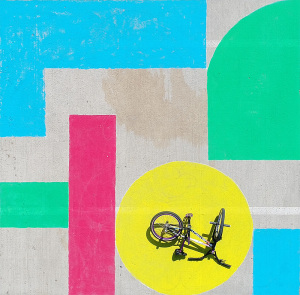 Radu Comsa in his solo exhibition “Après le Disco” shakes any surplus off his imaginary world and ventures the realm off for optimization and improvement. His methodology and objectives are very clearly defined in “Après le Disco”, an exhibition where visualization, the visual rendition of ideas, functions and processes through painting and installation-based assemblages call for an active mental participation. This is a space where the public’s own rational faculty and power of deliberation are simultaneously undermined and under scrutiny. He sets off with observations of color, perspective and form, and reaches as far as the performative dimensions of his own body vis-à-vis the object. His work talks loudly of gestalt in the vein of Paul Signac with his division of color and of Charles Biederman, the structurist, whose works attempted to capture the “structural processes”. In doing so, he puts himself in the company of those who have changed the reading of painting forever. Info: Galerie Emmanuel Hervé, 6 rue Jouye-Rouve, Duration: 10/11-23/12/17, Days & Hours: Wed-Sat 14:00-19:00, http://emmanuelherve.com
Radu Comsa in his solo exhibition “Après le Disco” shakes any surplus off his imaginary world and ventures the realm off for optimization and improvement. His methodology and objectives are very clearly defined in “Après le Disco”, an exhibition where visualization, the visual rendition of ideas, functions and processes through painting and installation-based assemblages call for an active mental participation. This is a space where the public’s own rational faculty and power of deliberation are simultaneously undermined and under scrutiny. He sets off with observations of color, perspective and form, and reaches as far as the performative dimensions of his own body vis-à-vis the object. His work talks loudly of gestalt in the vein of Paul Signac with his division of color and of Charles Biederman, the structurist, whose works attempted to capture the “structural processes”. In doing so, he puts himself in the company of those who have changed the reading of painting forever. Info: Galerie Emmanuel Hervé, 6 rue Jouye-Rouve, Duration: 10/11-23/12/17, Days & Hours: Wed-Sat 14:00-19:00, http://emmanuelherve.com
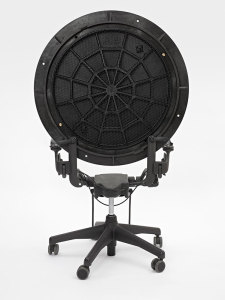 Michael Stevenson’s solo exhibition debuts the large-scale work “Serene Velocity in Practice: MC510/CS183”. Taking the form of an imagined tertiary institution of two classrooms, Serene Velocity in Practice is based on two seemingly unrelated academic courses, MC510 and CS183, which were modules taught for a short time in Californian higher-learning institutions, one by Vineyard Ministries founder, John Wimber, the other by Silicon Valley entrepreneur and venture capitalist, Peter Thiel. Both academic courses referenced in the installation were transformative in their respective fields, and each quickly developed a mass following globally, resulting in best-selling books and a multitude of spin-off courses. While previously unrelated, Stevenson brings these two courses together in Serene Velocity in Practice as an installation of two conjoined structures. Info: Curator: Natasha Conland, Auckland Art Gallery Toi o Tāmaki, Corner Kitchener and Wellesley Streets, Auckland, Duration: 12/11/17-6/2/18, Days & Hours: Daily 10:00-17:00, www.aucklandartgallery.com
Michael Stevenson’s solo exhibition debuts the large-scale work “Serene Velocity in Practice: MC510/CS183”. Taking the form of an imagined tertiary institution of two classrooms, Serene Velocity in Practice is based on two seemingly unrelated academic courses, MC510 and CS183, which were modules taught for a short time in Californian higher-learning institutions, one by Vineyard Ministries founder, John Wimber, the other by Silicon Valley entrepreneur and venture capitalist, Peter Thiel. Both academic courses referenced in the installation were transformative in their respective fields, and each quickly developed a mass following globally, resulting in best-selling books and a multitude of spin-off courses. While previously unrelated, Stevenson brings these two courses together in Serene Velocity in Practice as an installation of two conjoined structures. Info: Curator: Natasha Conland, Auckland Art Gallery Toi o Tāmaki, Corner Kitchener and Wellesley Streets, Auckland, Duration: 12/11/17-6/2/18, Days & Hours: Daily 10:00-17:00, www.aucklandartgallery.com
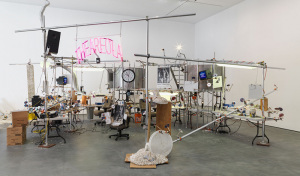 The exhibition by Jason Rhoades includes selected works from The Brant Collection. Rhoades is known for his highly original, large-scale sculptural installations, of which the significant examples “My Brother/Brancusi” (1995), “The Grand Machine / THEAREOLA” (2002), a major component of Rhoades’s wider PeaRoeFoam project. Partially influenced by 9/11 and the media’s reactions to the other, “My Madinah: in pursuit of my ermitage” (2004) constituted a complex investigation of contemporary manifestations of religion, culture, sexuality, and consumerism. Numerous neon signs spelling out nicknames for the word vagina are suspended above a carpet of adjoining blankets and towels, while a variety of other materials contain further references to the world’s holy cities and places of worship. Discrete sculptures related to “My Madinah” are also be on view, including a selection of self-fabricated shelves and chandeliers, where the neon phrases are suspended from a wooden wheel. Info: The Brant Foundation Art Study Center, 941 North Street Greenwich, Konektikat, USA, Duration: 13/11/17-1/3/18, Days & Hours: Mon-Fri 10:00-16:00, http://brantfoundation.org
The exhibition by Jason Rhoades includes selected works from The Brant Collection. Rhoades is known for his highly original, large-scale sculptural installations, of which the significant examples “My Brother/Brancusi” (1995), “The Grand Machine / THEAREOLA” (2002), a major component of Rhoades’s wider PeaRoeFoam project. Partially influenced by 9/11 and the media’s reactions to the other, “My Madinah: in pursuit of my ermitage” (2004) constituted a complex investigation of contemporary manifestations of religion, culture, sexuality, and consumerism. Numerous neon signs spelling out nicknames for the word vagina are suspended above a carpet of adjoining blankets and towels, while a variety of other materials contain further references to the world’s holy cities and places of worship. Discrete sculptures related to “My Madinah” are also be on view, including a selection of self-fabricated shelves and chandeliers, where the neon phrases are suspended from a wooden wheel. Info: The Brant Foundation Art Study Center, 941 North Street Greenwich, Konektikat, USA, Duration: 13/11/17-1/3/18, Days & Hours: Mon-Fri 10:00-16:00, http://brantfoundation.org
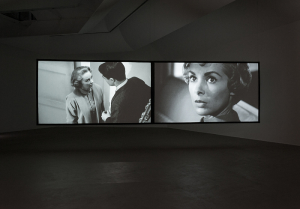 In the exhibition “back and forth and forth and back” two key film works by Douglas Gordon “24 Hour Psycho Back and Forth and To and Fro” (2008) and “5 Year Drive-By” (1995) are on presentation. For both films in the exhibition Gordon has diffused the suspense and longing of their original plots, forming new conditions for viewing and absorbing their content. In “5 Year Drive-By” (1995), the Western “The Searchers” (1956) is slowed down from its original 119 minutes to five years, reflecting the narrative in the film. While the original film, directed by John Ford, is full of fast-paced, dynamic scenes, as the hero travels across the desert landscape, “5 Year Drive-By” moves so slowly that the frame only changes every twenty-four minutes, causing the moving image to appear almost as a billboard still. On the other hand, “24 Hour Psycho Back and Forth and To and Fro” (2008) allows time to flow forward and backward at the same time, exacerbating the of Alfred Hitchcock’sthriller “Psycho” (1960), Gordon’s “24 Hour Psycho Back and Forth and To and Fro” introduces an layer of distortion. The film plays on two adjoining screens: on one, the film starts from the beginning, and on the other it starts from the end, so that for an unbearably brief moment (one twenty-fourth of a second), after waiting for twelve hours, the screens show the same sequence, the mirrored images resembling a giant, slow-moving Rorschach test. Info: Gagosian Gallery, 522 West 21st Street, New York, Duration: 14/11-22/12/17, Days & Hours: Tue-Sat 10:00-18:00, www.gagosian.com
In the exhibition “back and forth and forth and back” two key film works by Douglas Gordon “24 Hour Psycho Back and Forth and To and Fro” (2008) and “5 Year Drive-By” (1995) are on presentation. For both films in the exhibition Gordon has diffused the suspense and longing of their original plots, forming new conditions for viewing and absorbing their content. In “5 Year Drive-By” (1995), the Western “The Searchers” (1956) is slowed down from its original 119 minutes to five years, reflecting the narrative in the film. While the original film, directed by John Ford, is full of fast-paced, dynamic scenes, as the hero travels across the desert landscape, “5 Year Drive-By” moves so slowly that the frame only changes every twenty-four minutes, causing the moving image to appear almost as a billboard still. On the other hand, “24 Hour Psycho Back and Forth and To and Fro” (2008) allows time to flow forward and backward at the same time, exacerbating the of Alfred Hitchcock’sthriller “Psycho” (1960), Gordon’s “24 Hour Psycho Back and Forth and To and Fro” introduces an layer of distortion. The film plays on two adjoining screens: on one, the film starts from the beginning, and on the other it starts from the end, so that for an unbearably brief moment (one twenty-fourth of a second), after waiting for twelve hours, the screens show the same sequence, the mirrored images resembling a giant, slow-moving Rorschach test. Info: Gagosian Gallery, 522 West 21st Street, New York, Duration: 14/11-22/12/17, Days & Hours: Tue-Sat 10:00-18:00, www.gagosian.com
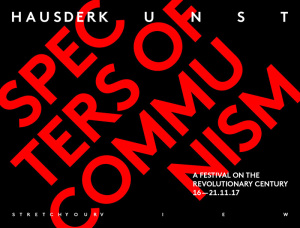 On the occasion of the centenary of the October Revolution in Russia and nearly one hundred years after Kurt Eisner declared Bavaria a Free State and a socialist republic at the Mathäser-Bräu in Munich, Haus der Kunst convenea “Specters of Communism: A Festival on the Revolutionary Century” The festival traces the multifaceted, partly contrary and partly astonishingly parallel manifestations of global communism. Conceived as a sequence of live events, the festival brings together participants from across the fields of art, philosophy, political theory, theater, performance, art history, film studies, and music in order to unfold the historical legacies of communism as a major feature of 20th and 21st century artistic, intellectual and political thought. “Specters of Communism” is organized in five sequences: “After all the Failures-Reinventing an Emancipatory Future”, “Scenes for a Revolution”, “The Adventures of Will and Intelligence”, “Form, Mastery and Aural Disintegration” and “Tableaux Vivants”. Info: Concept: Okwui Enwezor, Program Curator: Dr Damian Lentini, Program Organizer: Andrea Saul, Research: Tim Roerig, Haus der Kunst, Prinzregentenstrasse 1, Munich, Duration: 16-21/11/17, Days & Hours: Mon-Wed & Fri-Sun 10:00-20:00, Thu 10:00-22:00, www.hausderkunst.de
On the occasion of the centenary of the October Revolution in Russia and nearly one hundred years after Kurt Eisner declared Bavaria a Free State and a socialist republic at the Mathäser-Bräu in Munich, Haus der Kunst convenea “Specters of Communism: A Festival on the Revolutionary Century” The festival traces the multifaceted, partly contrary and partly astonishingly parallel manifestations of global communism. Conceived as a sequence of live events, the festival brings together participants from across the fields of art, philosophy, political theory, theater, performance, art history, film studies, and music in order to unfold the historical legacies of communism as a major feature of 20th and 21st century artistic, intellectual and political thought. “Specters of Communism” is organized in five sequences: “After all the Failures-Reinventing an Emancipatory Future”, “Scenes for a Revolution”, “The Adventures of Will and Intelligence”, “Form, Mastery and Aural Disintegration” and “Tableaux Vivants”. Info: Concept: Okwui Enwezor, Program Curator: Dr Damian Lentini, Program Organizer: Andrea Saul, Research: Tim Roerig, Haus der Kunst, Prinzregentenstrasse 1, Munich, Duration: 16-21/11/17, Days & Hours: Mon-Wed & Fri-Sun 10:00-20:00, Thu 10:00-22:00, www.hausderkunst.de
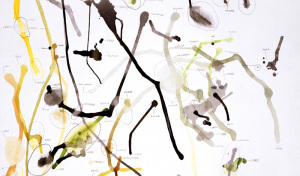 The exhibition “What Are You Looking At?” explores the career of Al Taylor, with more than 150 sculptures, drawings, and prints drawn from several of the artist’s major series over nearly two decades, the exhibition reveals the crisscrossing avenues of Taylor’s artistic inquiry and his innovative use of unexpected materials. This exhibition is the first to offer an in-depth look at the breadth of Taylor’s artistic production. It explores the diverse nature and humor of his visual language and the reciprocity in his practice among drawing, sculpture, and printmaking. Like many artists of his generation, Taylor often used commonplace objects, such as broomsticks, coffee cans, and hula hoops, to construct his three-dimensional works. He delighted in the deadpan materiality that gave his works form, graphically reproducing such ordinary subjects as kinks of twisted wire or the optical effects of transparent plastic. His art transcends straightforward observation to reveal the world in entirely new ways. Info: Curator: Michael Rooks, The High Museum of Art, 1280 Peachtree St NW, Atlanta, Duration: 17/11/17-18/3/18, Days & Hours: Tue-Thu & Sat 10:00-17:00, Fri 10:00-21:00, Sun 12:00-17:00, www.high.org
The exhibition “What Are You Looking At?” explores the career of Al Taylor, with more than 150 sculptures, drawings, and prints drawn from several of the artist’s major series over nearly two decades, the exhibition reveals the crisscrossing avenues of Taylor’s artistic inquiry and his innovative use of unexpected materials. This exhibition is the first to offer an in-depth look at the breadth of Taylor’s artistic production. It explores the diverse nature and humor of his visual language and the reciprocity in his practice among drawing, sculpture, and printmaking. Like many artists of his generation, Taylor often used commonplace objects, such as broomsticks, coffee cans, and hula hoops, to construct his three-dimensional works. He delighted in the deadpan materiality that gave his works form, graphically reproducing such ordinary subjects as kinks of twisted wire or the optical effects of transparent plastic. His art transcends straightforward observation to reveal the world in entirely new ways. Info: Curator: Michael Rooks, The High Museum of Art, 1280 Peachtree St NW, Atlanta, Duration: 17/11/17-18/3/18, Days & Hours: Tue-Thu & Sat 10:00-17:00, Fri 10:00-21:00, Sun 12:00-17:00, www.high.org
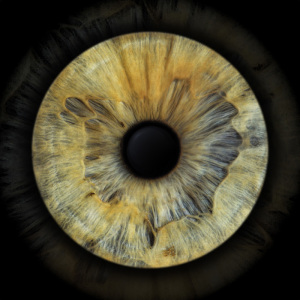 Near the European Parliament ST-ART contemporary art fair finds expression in a region rich in culture comprising the HEAR (Haute École des Arts du Rhin), the FRAC (located in Sélestat) and the Apollonia European Art Centre. ST-ART invites the general public to explore new artistic fields and make fresh discoveries. In the fair are participating 72 Galleries from: Belgium, Italy, Spain, Switzerland and France. Guest of Honour 2017 the Venet Foundation presents Donald Judd, Robert Morris, Lawrence Weiner, Sol LeWitt, Carl André, Arman, César, a series of small works by major artists dedicated to Bernar Venet, as well as many other surprises. Info: ST-ART, Exhibition Complex – Hall 7, Place Adrien Zeller, Strasbourg, Duration: 17-20/11/17, days & Hours: Fri (17/11/17) 11:00-21:00, Sat-Sun (18-19/11/17) 11:00-20:00, Mon (20/11/17) 11:00-19:00, Admission: Adult ticket: € 18, Duet ticket: € 27 for 2 people, Online ticket: € 12, Free for children under 16, www.st-art.com
Near the European Parliament ST-ART contemporary art fair finds expression in a region rich in culture comprising the HEAR (Haute École des Arts du Rhin), the FRAC (located in Sélestat) and the Apollonia European Art Centre. ST-ART invites the general public to explore new artistic fields and make fresh discoveries. In the fair are participating 72 Galleries from: Belgium, Italy, Spain, Switzerland and France. Guest of Honour 2017 the Venet Foundation presents Donald Judd, Robert Morris, Lawrence Weiner, Sol LeWitt, Carl André, Arman, César, a series of small works by major artists dedicated to Bernar Venet, as well as many other surprises. Info: ST-ART, Exhibition Complex – Hall 7, Place Adrien Zeller, Strasbourg, Duration: 17-20/11/17, days & Hours: Fri (17/11/17) 11:00-21:00, Sat-Sun (18-19/11/17) 11:00-20:00, Mon (20/11/17) 11:00-19:00, Admission: Adult ticket: € 18, Duet ticket: € 27 for 2 people, Online ticket: € 12, Free for children under 16, www.st-art.com
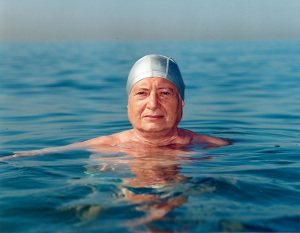 The exhibition “Im Moment. Photography from Saxony and Lusatia” brings together approximately 300 works by 40 photo artists who have been active since the 1970s. Uniting the artists is an overarching interest in narrative pictorial subjects and stylistic means, and in terms of content there is a range from documentary positions to portraits to staged photography. More than half of the artistic positions come from the collection of the Kunstfonds, which has been aquired since 1992 through purchases made in support of artists, which today are made possible by the cultural foundation Kulturstiftung des Freistaates Sachsen. Furthermore, photographic holdings of the Kulturhistorisches Museum, loans from the Deutsche Fotothek Dresden and the Stadtmuseum Bautzen as well as private collections will be on show. Some of the series will be publically exhibited for the first time. Info: Kaisertrutz, Platz des 17. Juni 1, Görlitz, Duration: 18/11/18-15/4/18, Days & Hours: Tue-Sat 10:00-17:00, Fri 10:00-20:00, https://kunstfonds.skd
The exhibition “Im Moment. Photography from Saxony and Lusatia” brings together approximately 300 works by 40 photo artists who have been active since the 1970s. Uniting the artists is an overarching interest in narrative pictorial subjects and stylistic means, and in terms of content there is a range from documentary positions to portraits to staged photography. More than half of the artistic positions come from the collection of the Kunstfonds, which has been aquired since 1992 through purchases made in support of artists, which today are made possible by the cultural foundation Kulturstiftung des Freistaates Sachsen. Furthermore, photographic holdings of the Kulturhistorisches Museum, loans from the Deutsche Fotothek Dresden and the Stadtmuseum Bautzen as well as private collections will be on show. Some of the series will be publically exhibited for the first time. Info: Kaisertrutz, Platz des 17. Juni 1, Görlitz, Duration: 18/11/18-15/4/18, Days & Hours: Tue-Sat 10:00-17:00, Fri 10:00-20:00, https://kunstfonds.skd
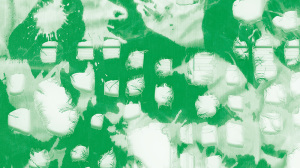 The notion of theft establishes a site of investigation. The exhibition “Theft is Vision” examines the desire to appropriate, a fundamental theme in the production of art. Throughout art there are typologies that ensue from the appropriation of motifs or of other works of art. As just one form of aggressive theft, the act of citation was already a cultural strategy long before Appropriation Art manifested itself. The typology of the enfilade (a suite of rooms in grand architecture) is reconfigured in translucent plastic in the exhibition design by Petra Blaisse / Inside Outside, is reconfigured in translucent plastic in the exhibition design and inserted into the White Cube space. It encloses formative typologies of works of art productively used by numerous artists. Info: Curators: Fredi Fischli and Niels Olsen, LUMA Westbau, Limmatstrasse 270, Zürich, Duration: 18/11/17-4/2/18, Days & Hours: Tue, Wed & Fri 11:00-18:00, Thu 11:00-20:00, Sat-Sun 10:00-17:00, http://westbau.com
The notion of theft establishes a site of investigation. The exhibition “Theft is Vision” examines the desire to appropriate, a fundamental theme in the production of art. Throughout art there are typologies that ensue from the appropriation of motifs or of other works of art. As just one form of aggressive theft, the act of citation was already a cultural strategy long before Appropriation Art manifested itself. The typology of the enfilade (a suite of rooms in grand architecture) is reconfigured in translucent plastic in the exhibition design by Petra Blaisse / Inside Outside, is reconfigured in translucent plastic in the exhibition design and inserted into the White Cube space. It encloses formative typologies of works of art productively used by numerous artists. Info: Curators: Fredi Fischli and Niels Olsen, LUMA Westbau, Limmatstrasse 270, Zürich, Duration: 18/11/17-4/2/18, Days & Hours: Tue, Wed & Fri 11:00-18:00, Thu 11:00-20:00, Sat-Sun 10:00-17:00, http://westbau.com
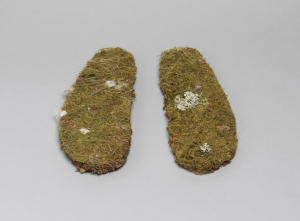 Two exhibitions are on Presentation at Kotha, Juha Pekka Matias Laakkonen’s “Osan otto” consists of a freshly felled pine tree, dragged just next to Kohta’s entrance, and a dish carved from a segment of its trunk, cut as closely as possible to the ground. The end of the felled trunk, and the surface of the stub that remains in an undisclosed location, are also carved, so that all three elements could be reunited. The concave surface of the stump could accommodate the dish, which in turn could welcome the convex end of the trunk back into the whole that ceased to exist when the tree was felled. Kohta’s second exhibition space is inaugurated with “Not Yet (And Nobody Knows Why Not)” (2008), a performance in public space, captured on video, by South African artist Donna Kukama. She stands in an open field in Nairobi as participants are leaving a meeting celebrating Kenya’s Mau Mau uprising against its British colonisers in the 1950s. She puts on lipstick, in a gesture that might be lacking in respect for the elderly passers-by. But as she smears it outside the accepted area, her whole face becomes blood red: an act of painting that illustrates the freedom fighters’ still mostly unfulfilled political expectations. Info: Kohta, Työpajankatu 2 B, building 7, 3rd floor, Helsinki, Duration: 19/11-22/12/17, Days & Hours: wed-Fri 12:00-18:00, Sat-sun 12:00-16:00, www.kohta.fi
Two exhibitions are on Presentation at Kotha, Juha Pekka Matias Laakkonen’s “Osan otto” consists of a freshly felled pine tree, dragged just next to Kohta’s entrance, and a dish carved from a segment of its trunk, cut as closely as possible to the ground. The end of the felled trunk, and the surface of the stub that remains in an undisclosed location, are also carved, so that all three elements could be reunited. The concave surface of the stump could accommodate the dish, which in turn could welcome the convex end of the trunk back into the whole that ceased to exist when the tree was felled. Kohta’s second exhibition space is inaugurated with “Not Yet (And Nobody Knows Why Not)” (2008), a performance in public space, captured on video, by South African artist Donna Kukama. She stands in an open field in Nairobi as participants are leaving a meeting celebrating Kenya’s Mau Mau uprising against its British colonisers in the 1950s. She puts on lipstick, in a gesture that might be lacking in respect for the elderly passers-by. But as she smears it outside the accepted area, her whole face becomes blood red: an act of painting that illustrates the freedom fighters’ still mostly unfulfilled political expectations. Info: Kohta, Työpajankatu 2 B, building 7, 3rd floor, Helsinki, Duration: 19/11-22/12/17, Days & Hours: wed-Fri 12:00-18:00, Sat-sun 12:00-16:00, www.kohta.fi
